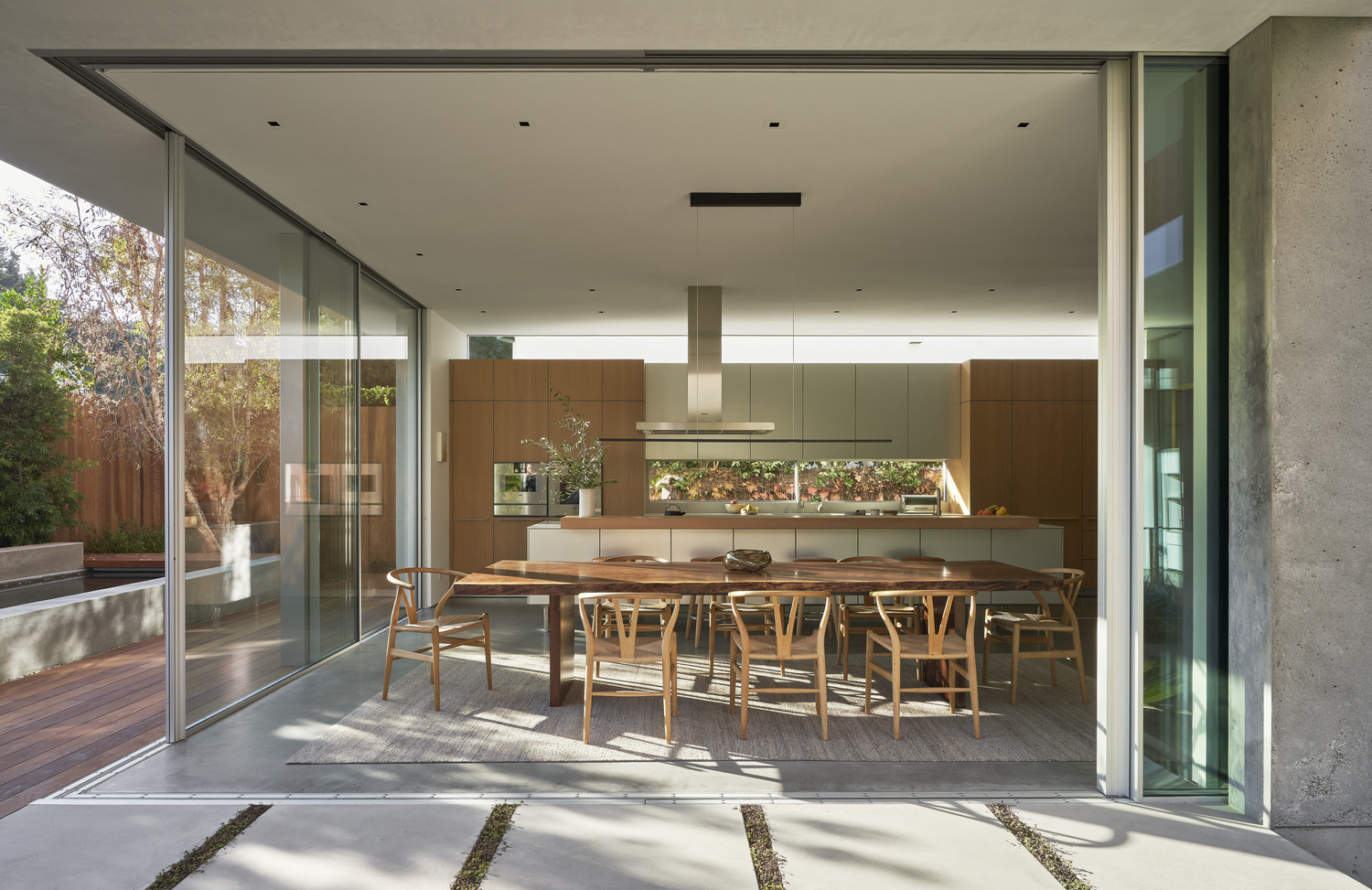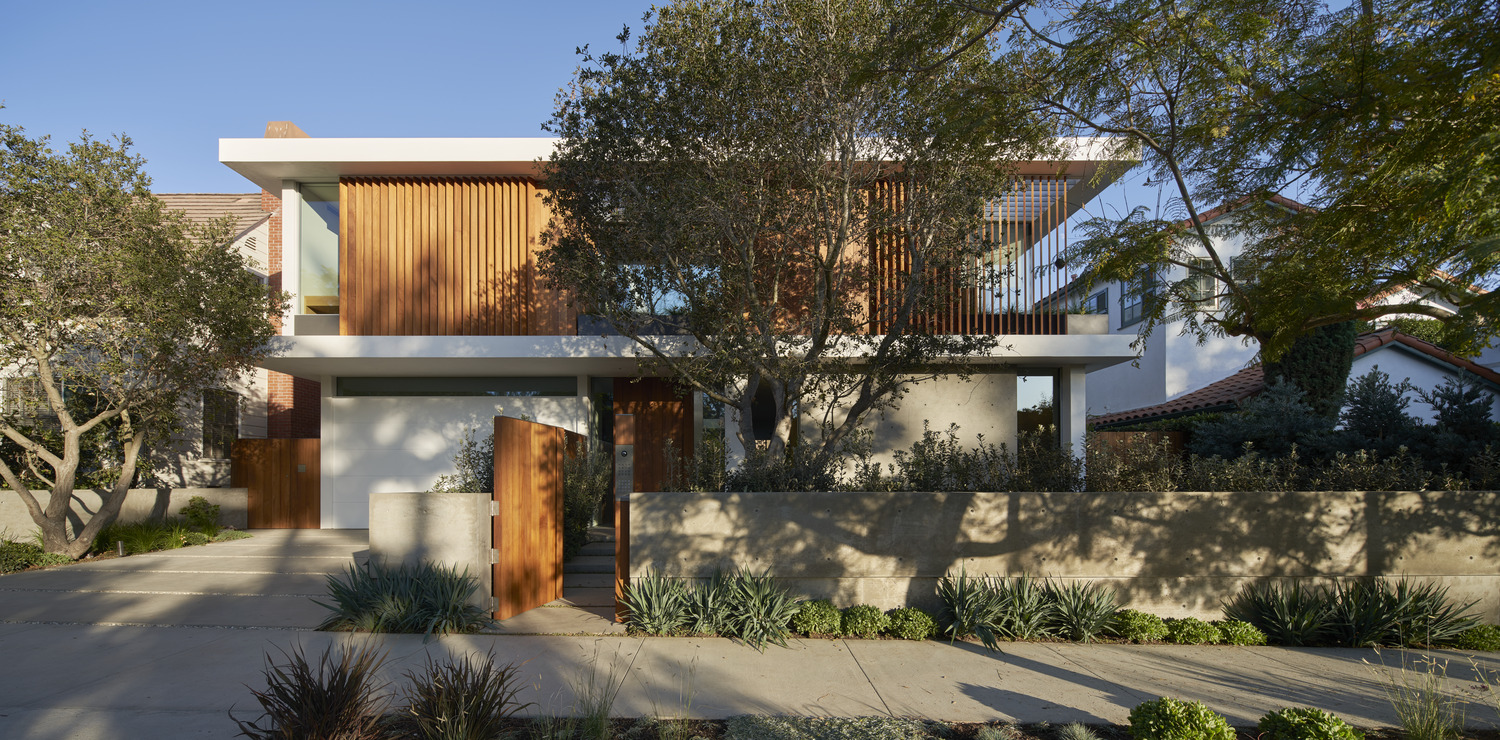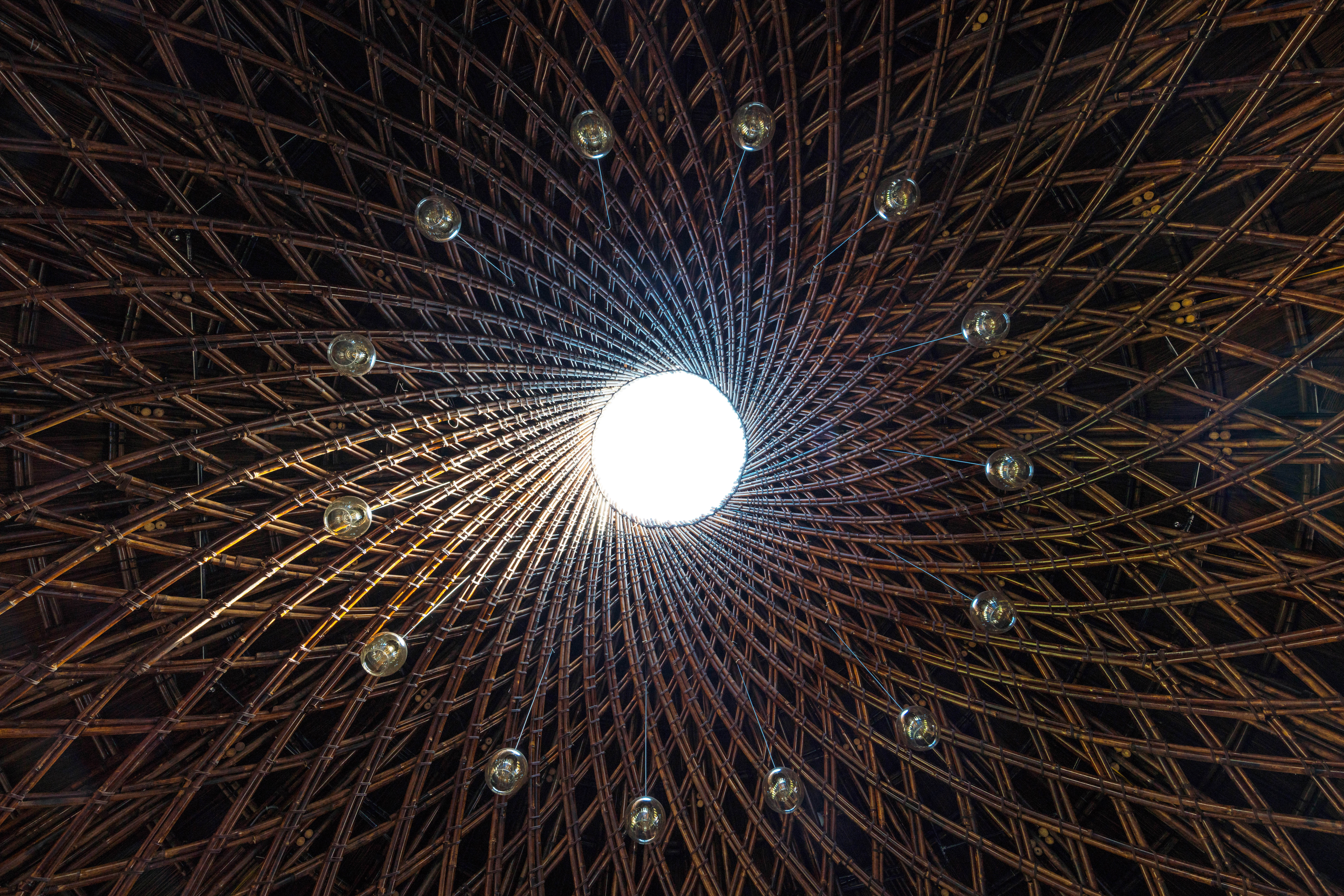There is arguably no greater joy for an architect than designing their own family home. Being both designer and client for a project means they can craft a space that is a true manifestation of their creative preferences, and enjoy the fruits of their own professional labor for years to come. At the same time, there is an added pressure, since the stakes are higher than ever — for an architect’s own family, only the best design, detailing and materials will do.
This was the challenge facing David Montalba, Founding Principal of Los Angeles-based practice Montalba Architects, who set out to design the perfect abode for his family in Santa Monica, California. The resulting property, named Vertical Courtyard House, revolves around a space that forms the heart of family living — a warm, welcoming kitchen that opens up to nature with the help of huge, floor-to-ceiling glass doors.

The kitchen is elevated by the presence of multiple Gaggenau appliances, which were Montalba’s preferred choice to blend seamlessly with the premium finishes that make up the rest of the living spaces. The specification process was made painless thanks to Montalba’s membership of Club 1683, Gaggenau’s VIP service providing bespoke support for clients specifying high-end architectural projects. The kitchen of Vertical Courtyard House, complete with Gaggenau oven, warming drawers and wine climate cabinet, is a testament to a deep and personal collaboration between architect and manufacturer.
We sat down with Montalba to discuss the creative process behind this stunning residence, his experience as a member of Gaggenau’s Club 1683, and his personal takeaways from this highly intimate project.
Paul Keskeys: What concepts drove the design of Vertical Courtyard House, and how did the project evolve over time?
David Montalba: The main objective was to create our family home as an integrated multi-level house connected to its surrounding landscape both from the indoors and outdoors all while maintaining some degree of privacy with our immediate neighbors. This was achieved with the vertical core or courtyard which bisects and organizes the home. The project unfolds through discovery as the more public spaces are layered amongst landscape and private spaces. These elements also add to the building’s sustainability.
It’s essentially a three level home pushed into the ground, with the greenery of the backyard folding down through the courtyard into the basement level allowing light to penetrate and engage the darker subterranean spaces. Additionally, a layering of operable glazing and louvered screens on the second floor allow for air transfer while providing adequate shade to the bedrooms and second floor office.
How does the house relate to the site?
We looked at the full extent of the lot as the home, not just the confines of the building. A single old growth avocado tree remains on the side and shades one of the backyard gathering areas. To create cohesiveness with the neighborhood and a sensible scale we did not max the building height and with the landscaping, we chose native plant varieties that would thrive in Southern California’s temperate climate, including several California oaks that frame the privacy of the front of the home.
How do you feel the chosen materials and products impact the personal experience of each space in the house?
All of the materials were selected in response to material reflectivity and massing. Constructability of the building systems at the upper floors are more domestic, residential with smooth stucco over light wood framed construction due to seismic and limitations of spans and overhangs, while the base of the building is massive, textured and grounded by the weight of the cast in place concrete walls. Reflectivity and the play of natural light played a major role in the development of the exterior facade for both privacy and controlled views. Ultimately the reflectivity and textures were driven by a desire to contrast the upper bedroom floors from the lower public levels.
The materials are natural, durable, yet contrast in their relation to one another while the products provide high performance and crafted experiences in each space. For instance, in this home the kitchen is outfitted with Gaggenau products which give you the ability to really refine and craft how you’re cooking and create an unparalleled performance and experience within the kitchen.

What were the main reasons you chose these particular Gaggenau products for this project?
From a design standpoint, the clean lines, flexibility and precision tie into the environments we create. It’s also about cooking and the performance, not just the curated look and appeal. I frequently liken their products to Porsche: from a historical standpoint it’s always had immense precision, accuracy and development all while having a core simplicity rooted in craft. Ultimately the kitchen is a room of performance, and in order to perform perfectly you need the right tools, and we find those tools to be Gaggenau’s products.
How have you forged closer connections with brands and makers to really understand the nuances of the products?
We’ve made a diligent effort to better understand the brands and their DNA, as well as understanding how their products perform and the background for each. In return, this has been a big part of us being able to feel good about the advice we give to our clients on why they should select a specific brand and allows us to also truly understand the products first hand.
For example, we are a part of the Gaggenau Club 1683 program. Being part of this initiative allows us to have a first-hand look at product development plans, better learning about new innovations as well as closer connections to professional chefs, industrial designers and other key partners that help inform the need for certain techniques and materials. We also have an opportunity to connect with peers, in unique international and domestic locations, to discuss design directions and new ways of approaching various projects.
Returning to Vertical Courtyard House, how do you feel about the finished project and what is your main takeaway?
Given the lot’s size and the neighborhood, the biggest challenge was making sure we didn’t overbuild and create something that didn’t coexist with the neighboring homes. The decision to go vertical with proportions driven by experience-based ideas — and center the home around a vertical courtyard that connects all three volumes, along with adjacent terraced gardens — allowed us to create moments of simplicity and poetry within the residence that otherwise could have been lost on the site.
One of my favorite spaces in the house is undoubtedly the kitchen. As we’ve been spending more time at home, I’ve never felt more inspired to perfect my culinary craft than in here — especially making pizzas on Gaggenau’s pizza stone, which has been a family favorite in the house.
To learn more about Club 1683 and chat with Gaggenau about becoming a member, click here.









